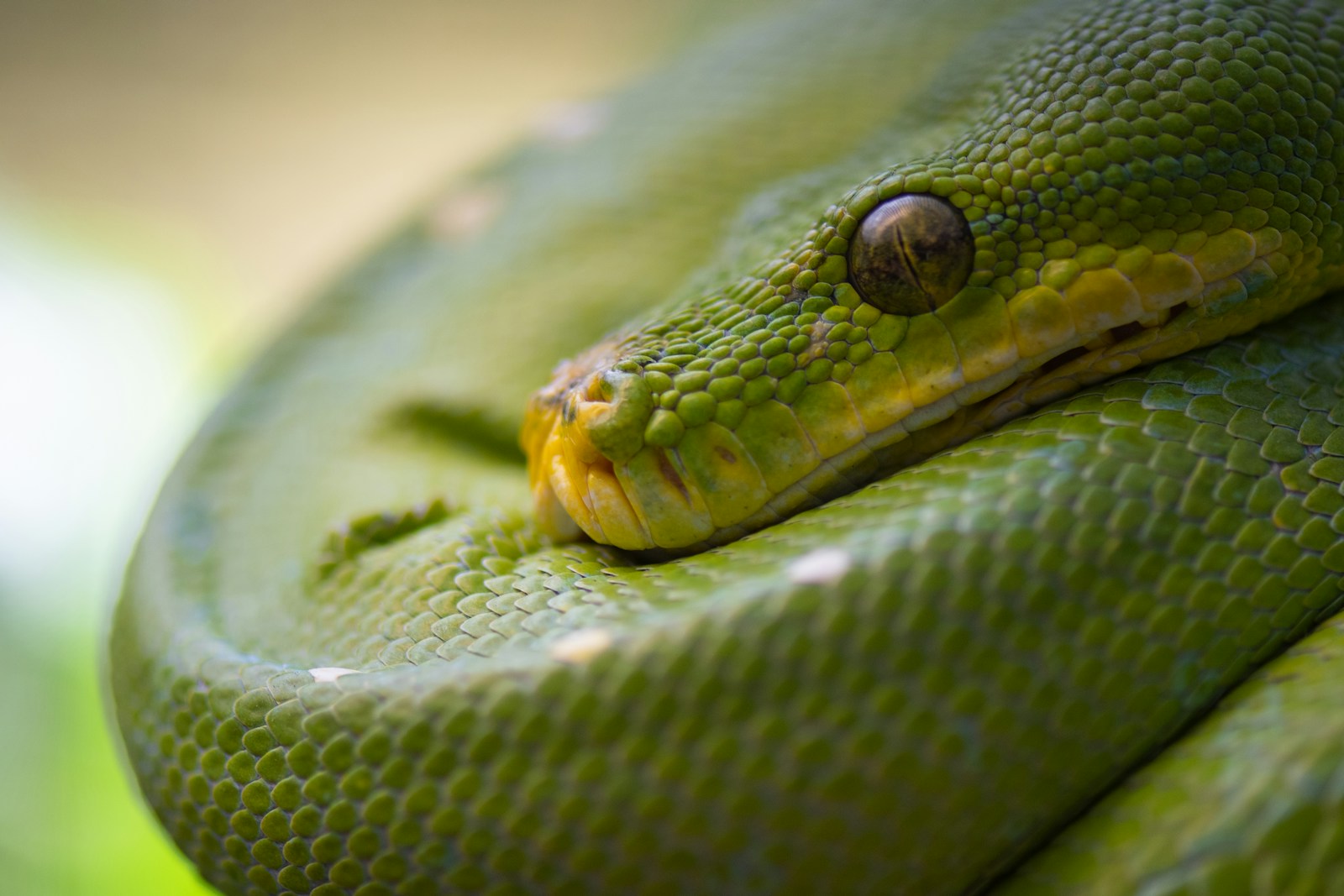When we think of powerful snakes, our minds often conjure images of massive pythons crushing prey or venomous vipers with deadly strikes. However, the animal kingdom is full of surprises, and some of the most unassuming serpents possess remarkable strength that belies their innocent appearance. These deceptively powerful snakes demonstrate that in nature, appearances can be misleading, and even the most harmless-looking creatures may harbor unexpected abilities.
The Deceptive Ring-Necked Snake
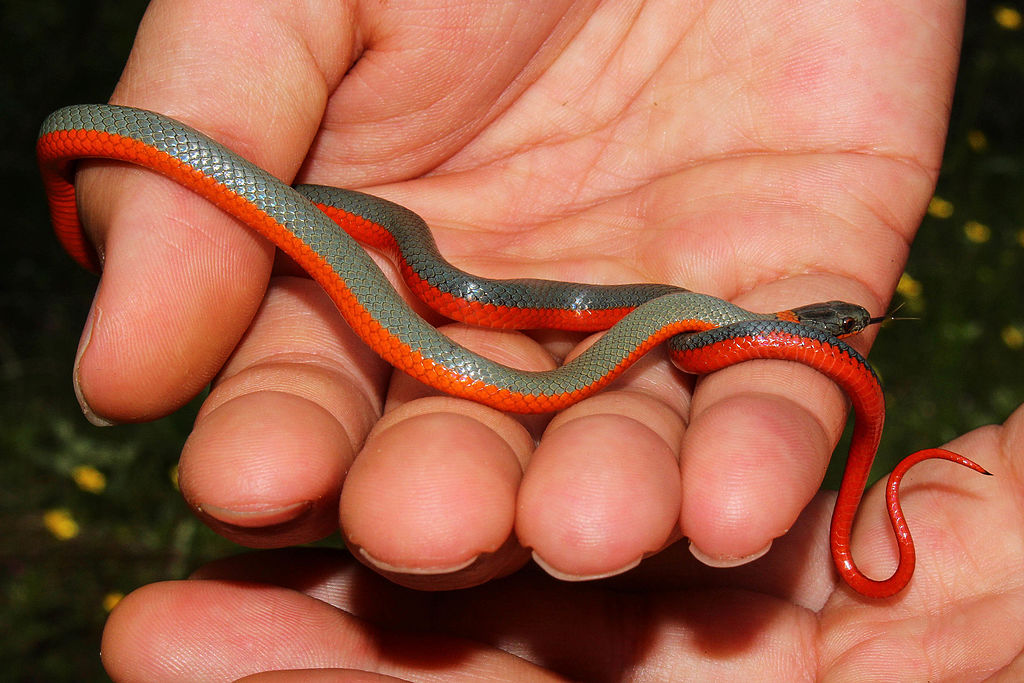
The ring-necked snake (Diadophis punctatus) appears harmless with its slender body rarely exceeding 15 inches and adorable, almost cartoon-like features. With its characteristic yellow or orange ring around its neck contrasting against a dark body, this snake looks more like a child’s toy than a formidable predator. However, this diminutive serpent possesses surprising constricting strength that it uses to subdue salamanders, worms, and small lizards. Despite being completely harmless to humans, the ring-necked snake can apply proportionally impressive pressure when wrapping around prey, demonstrating that power comes in small packages in the snake world.
The Misleading Appearance of Garter Snakes

Garter snakes (Thamnophis spp.) are among the most recognizable and seemingly innocuous snakes in North America, often encountered in gardens and parks. Their slender bodies, distinctive stripes, and small size give them an unthreatening appearance that has made them popular with beginner snake enthusiasts. Despite their gentle demeanor around humans, garter snakes possess remarkable muscle strength for their size, allowing them to capture and subdue fish, amphibians, and invertebrates with surprising efficiency. Their quick, powerful lateral movements when swimming demonstrate a muscular prowess that contradicts their delicate appearance, making them far more capable hunters than casual observers might assume.
The Surprising Power of Hognose Snakes
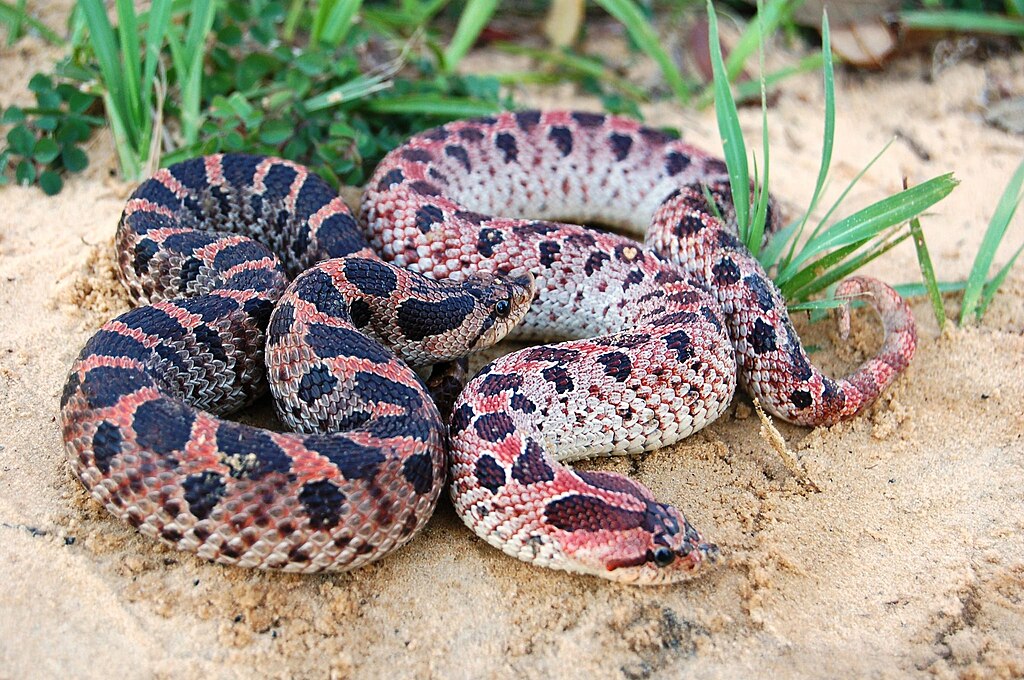
Hognose snakes (Heterodon spp.) are famous for their upturned snouts and dramatic defensive displays that include playing dead when threatened. These theatrical behaviors, combined with their generally small to medium size and rounded eyes, give them an almost comical, harmless appearance. However, hognose snakes possess specialized strength in their necks and heads that allows them to dig through soil with remarkable efficiency and force. This burrowing power enables them to unearth toads—their preferred prey—from underground hiding places. Their specialized muscles can generate significant force, allowing these seemingly gentle snakes to move substantial amounts of soil and sand during hunting expeditions or when creating burrows.
The Unexpected Might of Smooth Green Snakes
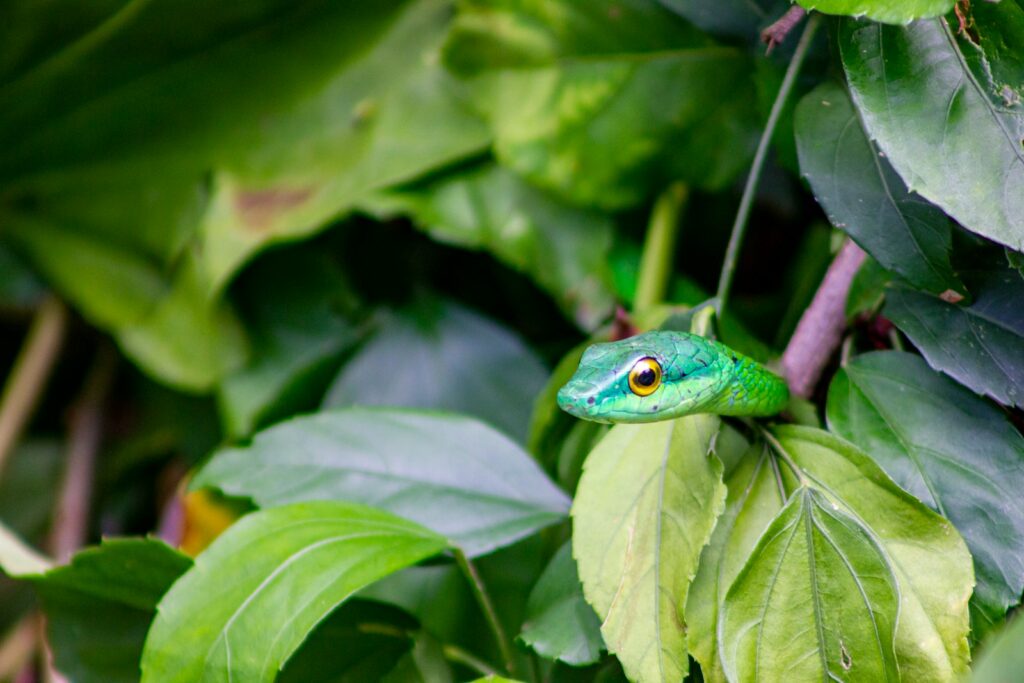
The smooth green snake (Opheodrys vernalis), with its vibrant grass-green coloration and slender build, looks more like a living blade of grass than a powerful predator. Rarely exceeding two feet in length and with a body as thin as a pencil, these snakes appear fragile and delicate to most observers. Despite their wispy appearance, smooth green snakes display surprising muscular coordination and strength when capturing insects and spiders. Their lightning-fast strikes require precise muscle control and more power than their thin bodies suggest possible. Additionally, their ability to climb vegetation demonstrates remarkable grip strength in proportion to their body size, allowing them to hunt in dimensions that many larger snakes cannot access effectively.
The Deceptive Power of Worm Snakes
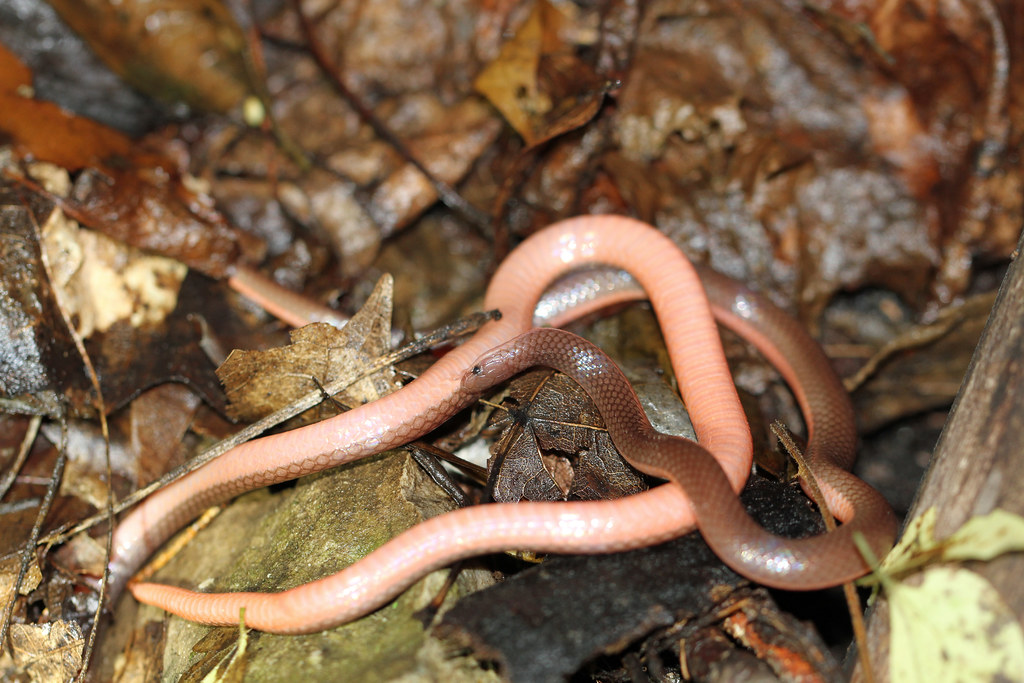
Worm snakes (Carphophis amoenus) are easily mistaken for large earthworms with their small size, glossy scales, and brownish-purple coloration. Rarely growing beyond 13 inches and maintaining a pencil-thin diameter throughout their lives, these snakes appear utterly harmless and physically unimpressive. However, worm snakes possess specialized musculature that allows them to burrow through compacted soil with surprising force and efficiency. Their entire body is optimized for generating the pressure needed to push through dense earth, and they can disappear into the ground with remarkable speed when threatened. This specialized strength allows them to pursue their prey—primarily earthworms and soft-bodied invertebrates—through subterranean environments that would be impenetrable to many larger snake species.
The Brown Snake’s Hidden Abilities
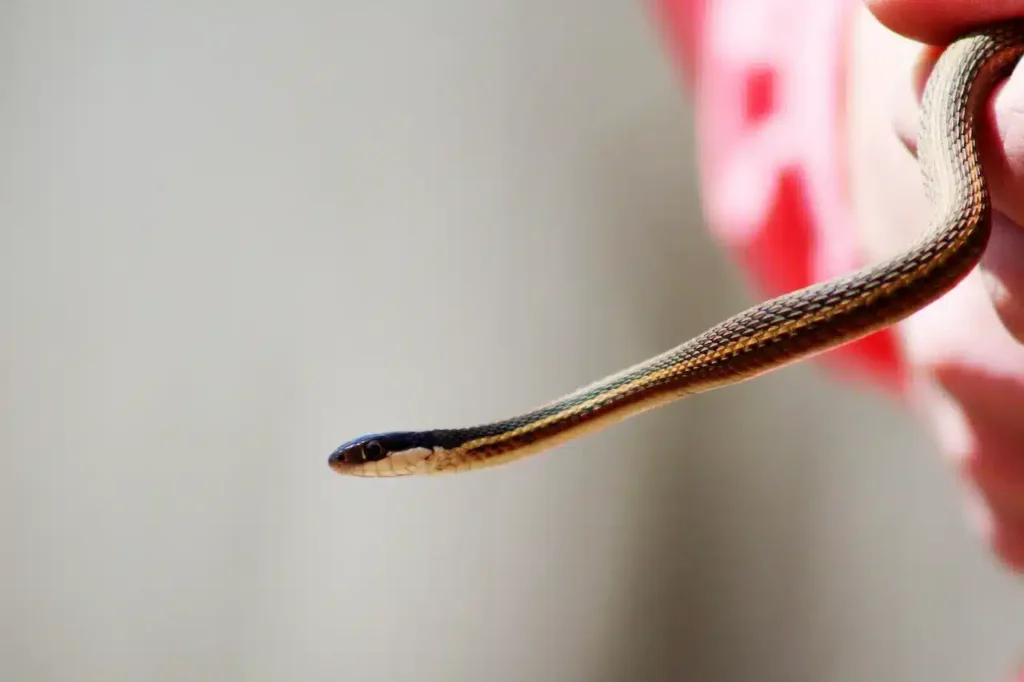
The common brown snake (Storeria dekayi) is frequently encountered in gardens and wooded areas across North America, rarely exceeding 12 inches in length. With its unassuming brown coloration, small head, and thin body, this snake appears completely harmless and physically unimpressive to most observers. Despite its modest proportions, the brown snake demonstrates remarkable muscular efficiency when hunting, using short but powerful bursts of speed to capture slugs, snails, and worms. Their specialized neck muscles allow them to pull snails from their shells with surprising force, a feat requiring significantly more strength than their size would suggest possible. These snakes also display impressive climbing abilities when necessary, ascending vertical surfaces that would challenge much larger serpents.
The Threadsnake’s Surprising Adaptations
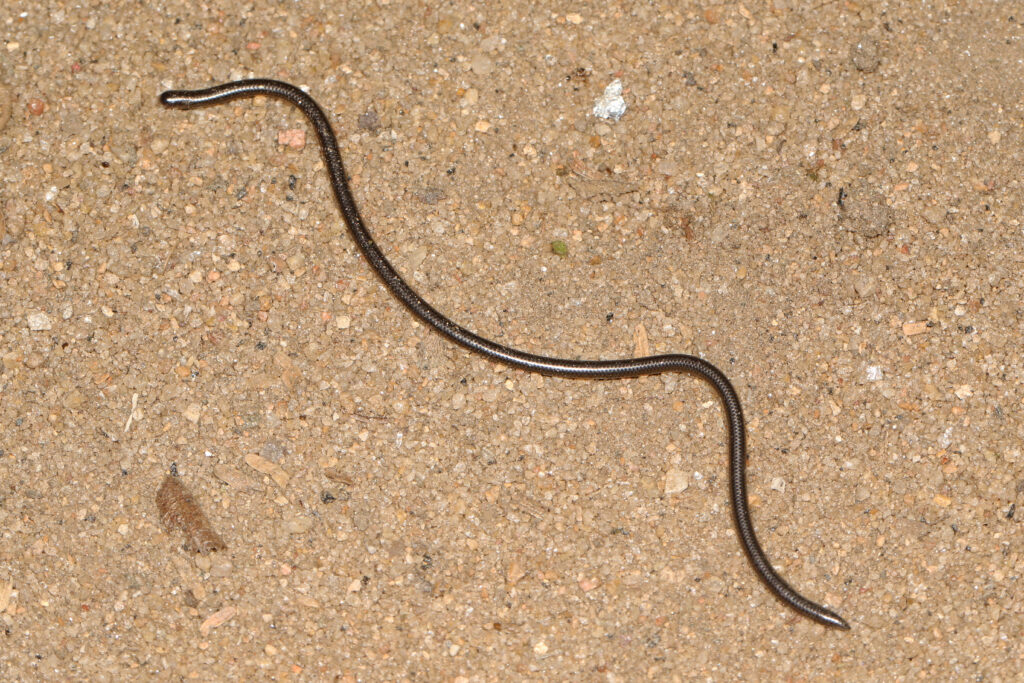
Threadsnakes (Leptotyphlops spp.) are among the smallest snakes in the world, with some species barely reaching 6 inches in length and maintaining a diameter similar to spaghetti. These tiny serpents, with their thread-like bodies and reduced eyes, appear utterly incapable of any physical feat requiring strength. Remarkably, threadsnakes possess specialized muscles in their head and neck that generate disproportionate force for their size, allowing them to pry open ant and termite nests—structures that can resist the efforts of much larger animals. Their backward-pointing spines and powerful forward thrusting movements enable them to navigate through tight underground tunnels with surprising speed and force. Some species can even perform a remarkable defensive behavior where they anchor their tail and thrust their body with enough power to potentially startle predators many times their size.
The Rosy Boa’s Gentle Strength
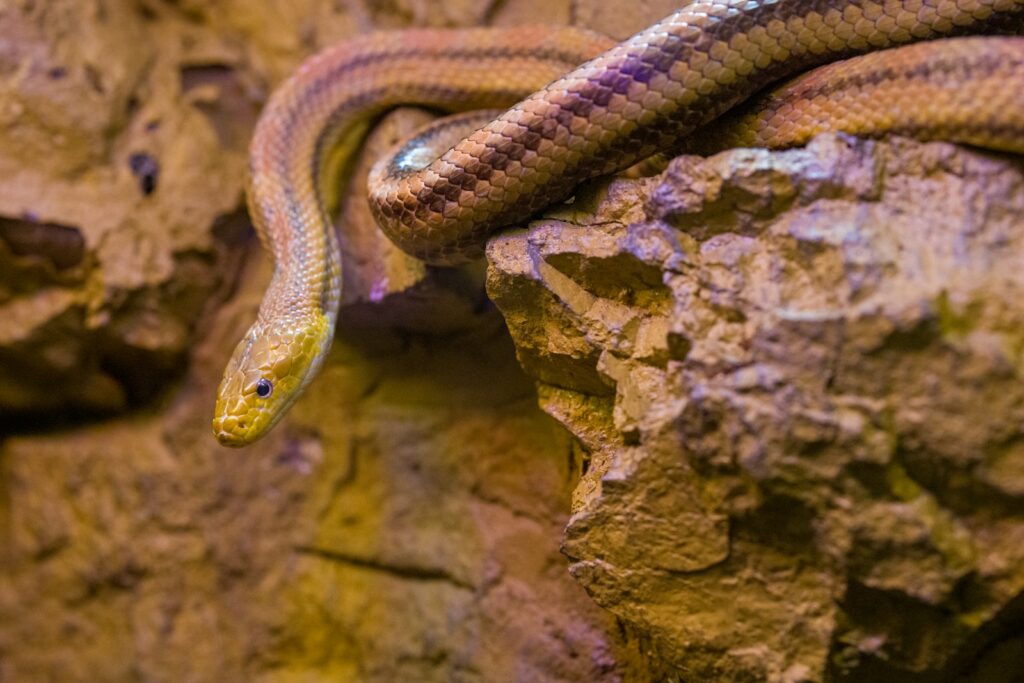
The rosy boa (Lichanura trivirgata) presents a non-threatening appearance with its blunt head, beautiful pattern, and relatively small size compared to other boas. Its docile temperament and reluctance to bite have made it a favorite among snake enthusiasts who appreciate its handleable nature. Despite this gentle demeanor, rosy boas possess the characteristic constricting ability of their larger relatives, applying impressive pressure with their muscular bodies when subduing prey. Their adaptations for desert life include powerful muscles that allow them to navigate rocky terrain with remarkable agility and grip strength. When threatened, a rosy boa can anchor itself with surprising force, making it difficult for predators to dislodge it from rocky crevices—a testament to the hidden power within its modestly-sized body.
The Rubber Boa’s Misleading Name

The rubber boa (Charina bottae) earns its name from its smooth, glossy scales and flexible body that give it a rubber-like appearance. With a blunt head and tail so similar they’re often confused, this small, unassuming boa rarely exceeds 2-3 feet in length and has a gentle temperament that makes it seem utterly harmless. Despite its innocent appearance, the rubber boa possesses the constricting power characteristic of the boa family, capable of generating surprising pressure when subduing rodent prey. These snakes display remarkable burrowing strength, moving through soil and leaf litter with unexpected efficiency thanks to specialized muscles throughout their compact bodies. Perhaps most impressive is their cold-weather strength, maintaining muscular function at temperatures that would render many other snake species immobile.
The Blind Snake’s Invisible Power
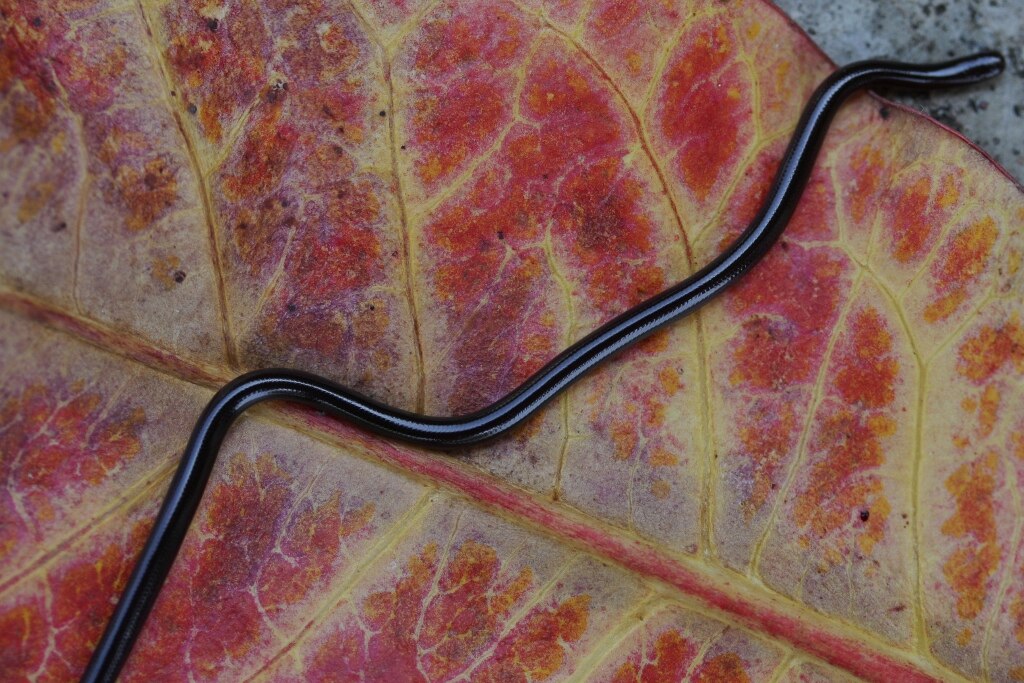
Blind snakes (Indotyphlops spp.) appear more like earthworms than snakes, with their small size, pinkish coloration, and barely visible eyes covered by scales. Rarely exceeding 10 inches and maintaining a uniform pencil-thin diameter, these snakes seem incapable of any significant physical feats. However, blind snakes possess specialized muscles that give them remarkable burrowing capabilities, allowing them to tunnel through soil with surprising speed and efficiency. Their unique musculature enables them to move both forward and backward with equal ease—an unusual adaptation among snakes that demonstrates their specialized strength. When hunting, blind snakes can generate enough force to break into the nests of ants and termites, consuming eggs and larvae while resisting the attacks of soldier insects that would easily overwhelm many larger predators.
The King Snake’s Unexpected Weapon
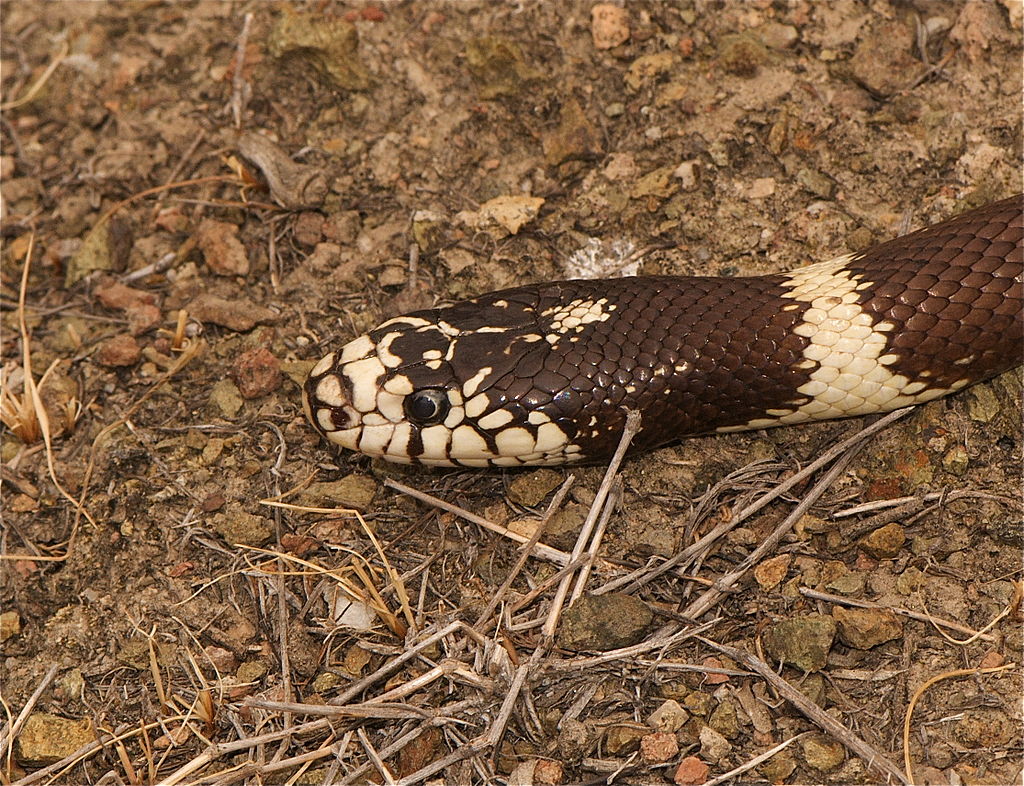
While king snakes (Lampropeltis spp.) are not necessarily tiny, their colorful patterns and relatively modest size compared to large constrictors give them a less threatening appearance than their true capabilities warrant. These beautiful snakes, beloved for their docile nature in captivity, possess constricting strength that pound-for-pound exceeds that of many larger snake species. Research has demonstrated that kingsnakes can generate constricting pressure double that of similarly-sized pythons, a surprising finding that explains their ability to prey upon other snakes, including venomous species. This exceptional constricting ability comes from specialized muscle arrangements and mechanical advantages in their skeletal structure that allow for maximum force generation. Even more impressive is their ability to maintain this constriction pressure for extended periods without tiring, a testament to their remarkable muscular efficiency.
The Sand Boa’s Buried Strength
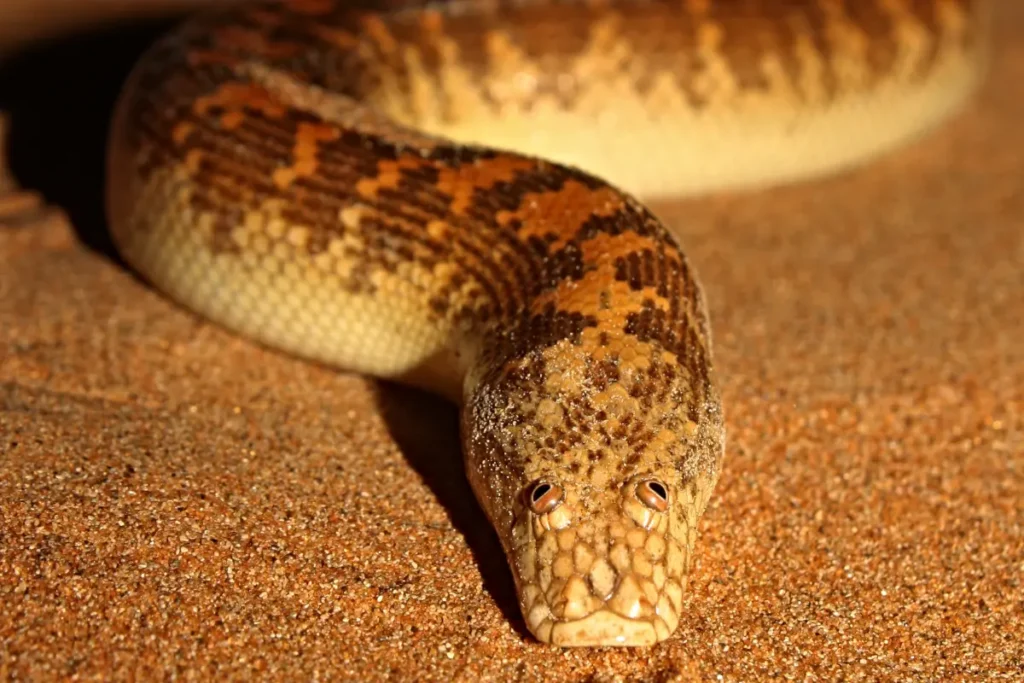
Sand boas (Eryx spp.) appear almost comically harmless with their stubby bodies, small blunt heads, and tiny eyes perched atop their snouts. Their generally docile nature and reluctance to bite reinforces this harmless impression for most observers. Beneath this unassuming exterior, however, sand boas possess remarkable specialized strength adapted for their unique hunting strategy. They can burrow beneath the desert sand with astonishing speed, using powerful muscular contractions to essentially “swim” through loose substrate. When hunting, sand boas can explode from beneath the sand with surprising force, grabbing prey and pulling it under in seconds. Their constricting power is concentrated in a compact body, allowing them to subdue rodents and lizards with efficiency that belies their small size and innocent appearance.
Understanding the Science Behind Snake Strength
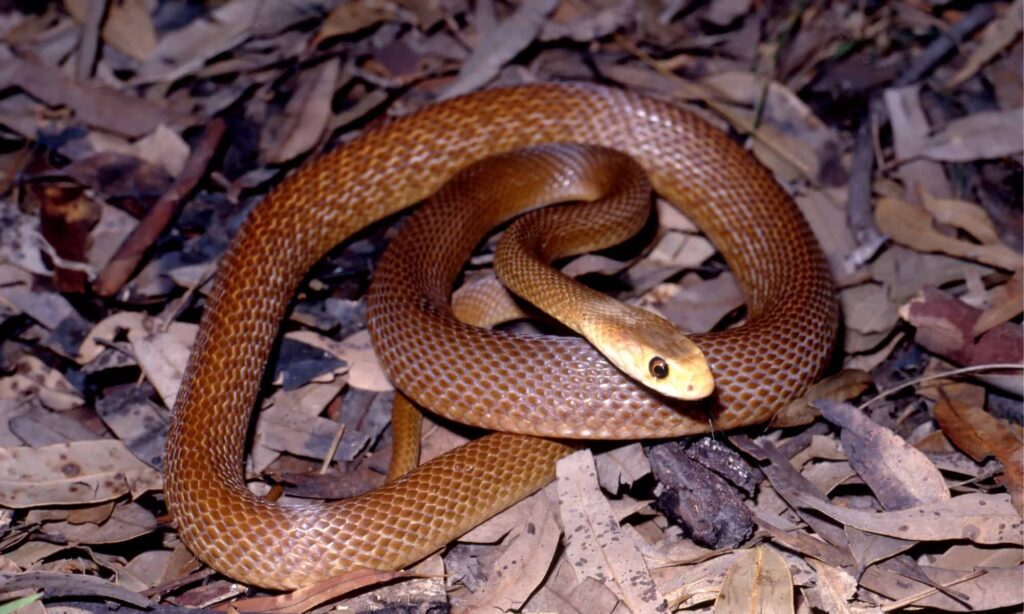
The surprising strength of small, harmless-looking snakes stems from several specialized adaptations in their musculoskeletal system. Unlike mammals that rely on limbs and leverage, snakes generate force through the coordinated action of numerous vertebrae and attached muscles, sometimes exceeding 400 individual vertebral joints in a single snake. This segmented design allows for remarkable force distribution and specialized muscle recruitment patterns that maximize strength for specific tasks like constriction or burrowing. Small snakes often possess proportionally more muscle mass relative to their body size than larger species, and their muscles may contain higher densities of fast-twitch fibers for explosive movements. Additionally, the arrangement of their ribs and associated muscles creates a biomechanical advantage that allows even tiny snakes to generate surprising force when needed for hunting or defense.
Conclusion
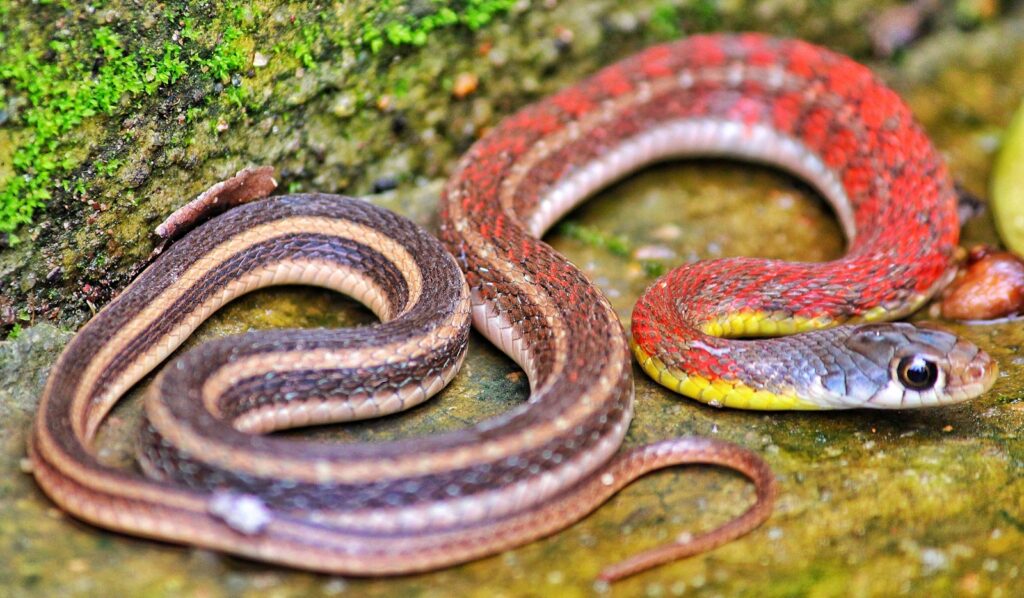
The world of harmless-looking snakes with surprising strength reminds us that nature often conceals remarkable adaptations behind unassuming exteriors. From the tiny threadsnake’s ability to breach ant colonies to the kingsnake’s python-surpassing constriction power, these serpents demonstrate that physical capability isn’t always obvious at first glance. These snakes have evolved specialized muscles and movement strategies perfectly suited to their ecological niches, allowing them to thrive despite their modest size and harmless appearance. Next time you encounter a small, innocuous-looking snake, remember that it may possess hidden strengths and abilities that make it a perfectly adapted predator in its own right—a testament to the endless ingenuity of evolutionary adaptation.

